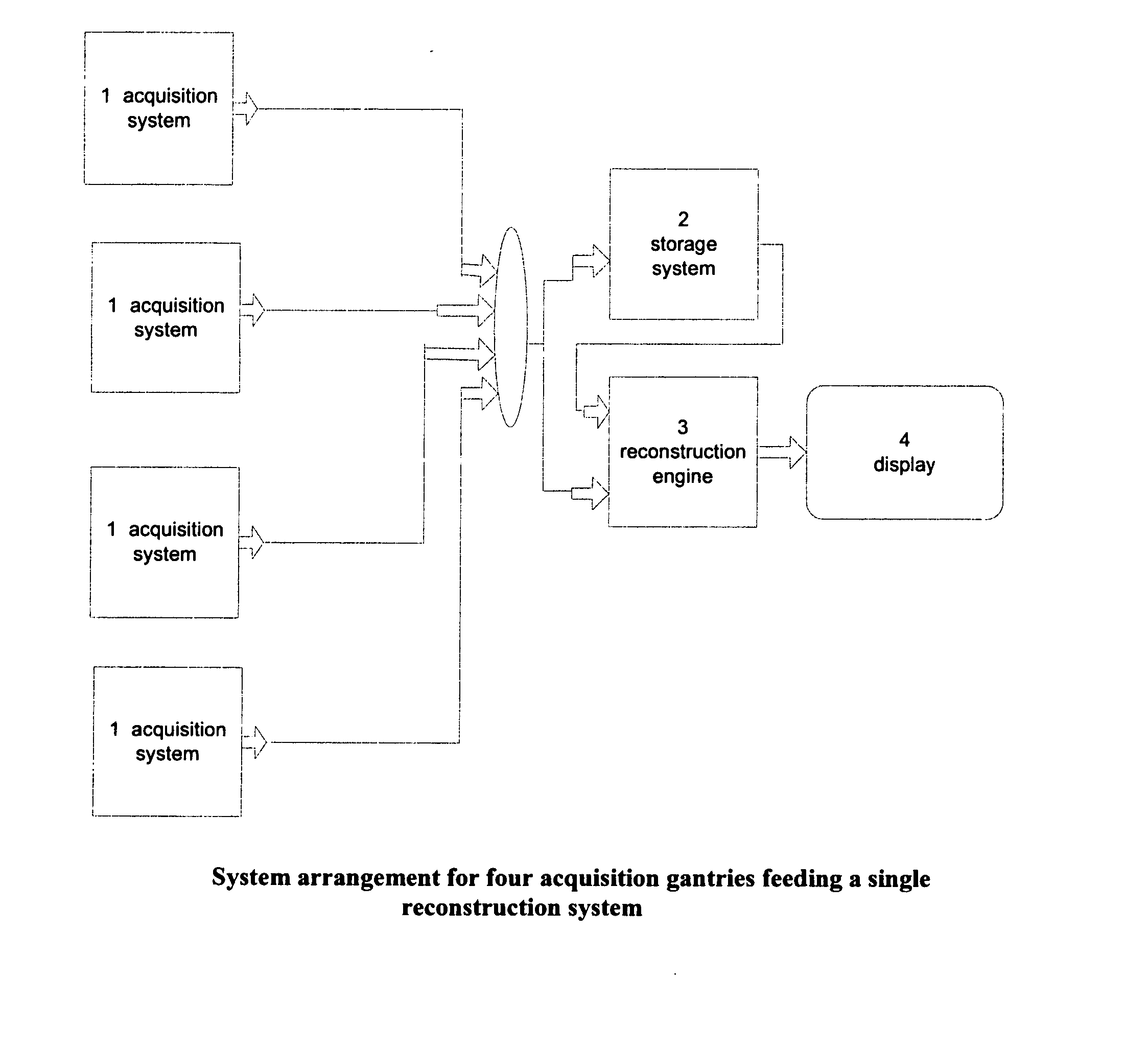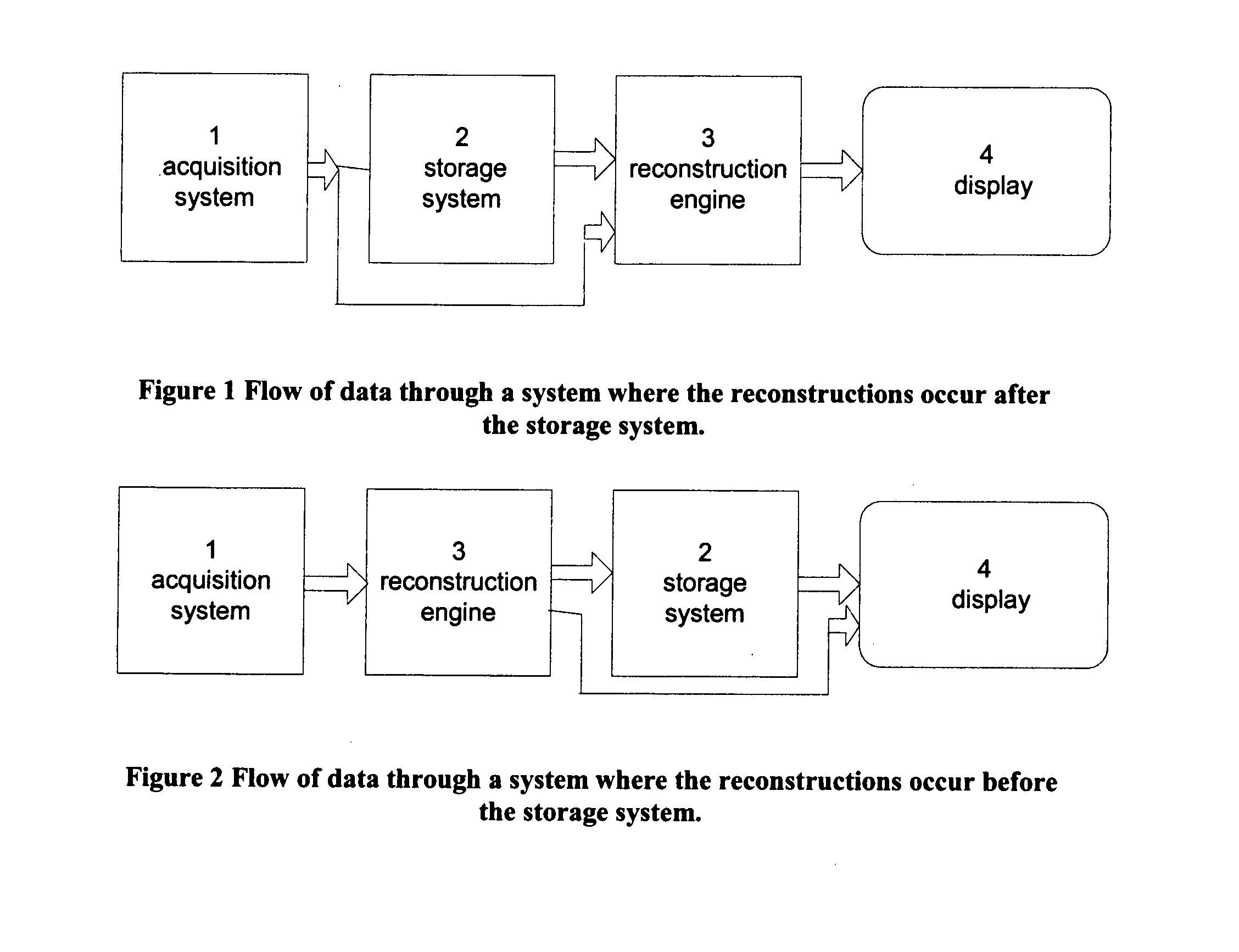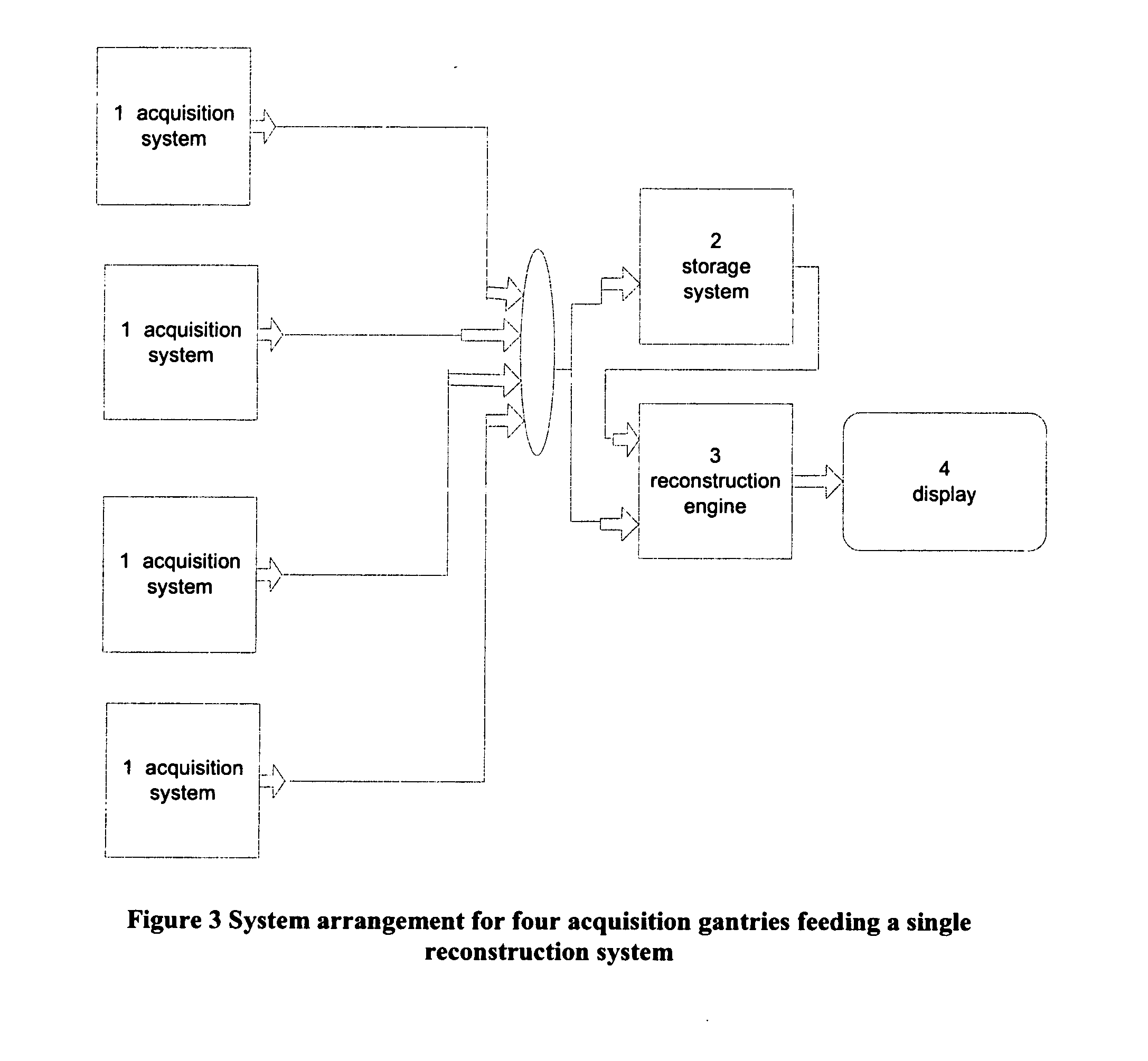Image Handling and display in X-ray mammography and tomosynthesis
a technology applied in the field of x-ray mammography and tomography, can solve the problems of large storage requirements of tomosynthesis images tp and/or tr, processing time required to reconstruct tomosynthesis images tr, and lossless compression, so as to facilitate identification and/or assessment of suspected abnormalities
- Summary
- Abstract
- Description
- Claims
- Application Information
AI Technical Summary
Benefits of technology
Problems solved by technology
Method used
Image
Examples
Embodiment Construction
[0032] In describing preferred embodiments illustrated in the drawings, specific terminology is employed for the sake of clarity. However, the disclosure of this patent specification is not intended to be limited to the specific terminology so selected and it is to be understood that each specific element includes all technical equivalents that operate in a similar manner.
[0033]FIG. 1 illustrates flow of data in one example of a system disclosed in this patent specification. An image data acquisition system 1 acquires tomosynthesis and / or mammography image data for Tp and / or Mp images of patients' breasts, and can take the form of and use the acquisition methods of any of the systems disclosed in said earlier-filed patent applications. Following acquisition, the data describing projection images Tp are sent to storage device 2, which can include a Picture Archiving and Communication System (PACS) storage, for example of the type commonly used in hospitals and other healthcare facil...
PUM
 Login to View More
Login to View More Abstract
Description
Claims
Application Information
 Login to View More
Login to View More - R&D
- Intellectual Property
- Life Sciences
- Materials
- Tech Scout
- Unparalleled Data Quality
- Higher Quality Content
- 60% Fewer Hallucinations
Browse by: Latest US Patents, China's latest patents, Technical Efficacy Thesaurus, Application Domain, Technology Topic, Popular Technical Reports.
© 2025 PatSnap. All rights reserved.Legal|Privacy policy|Modern Slavery Act Transparency Statement|Sitemap|About US| Contact US: help@patsnap.com



